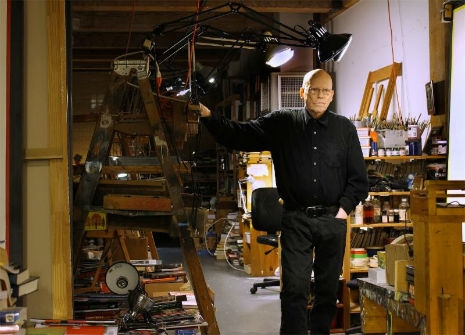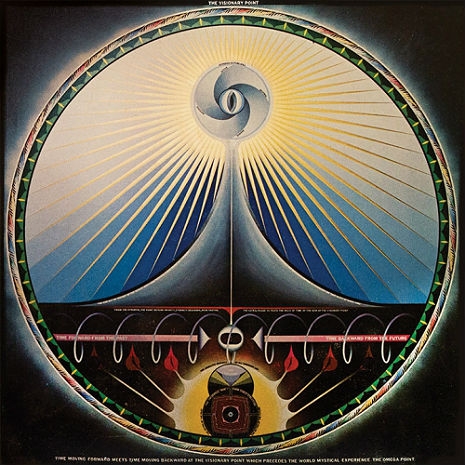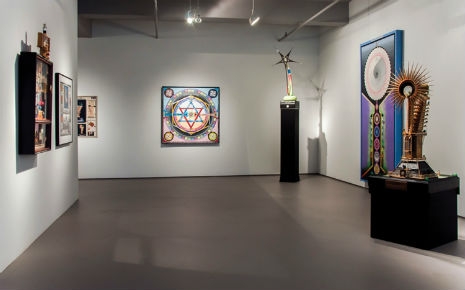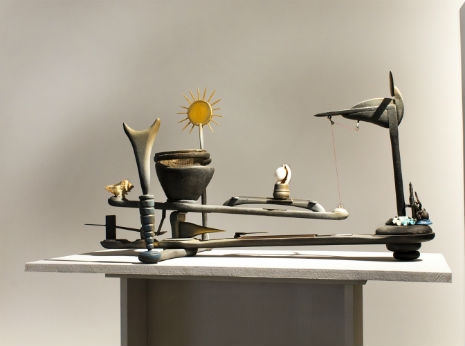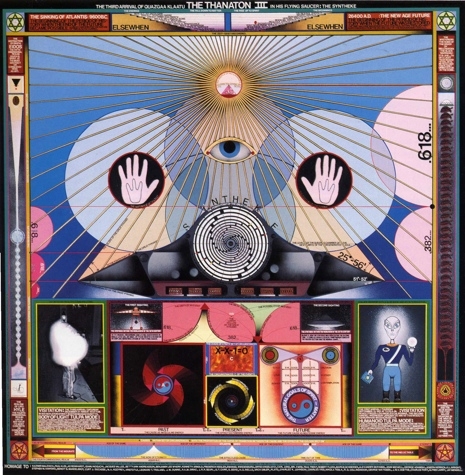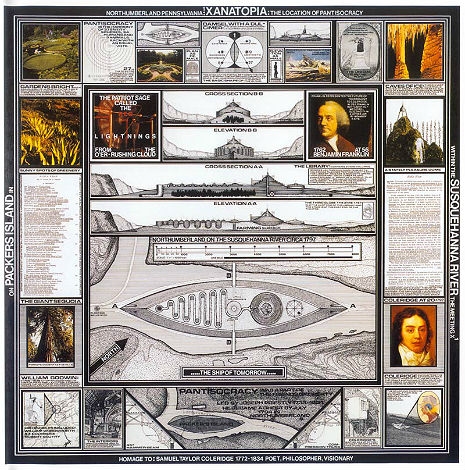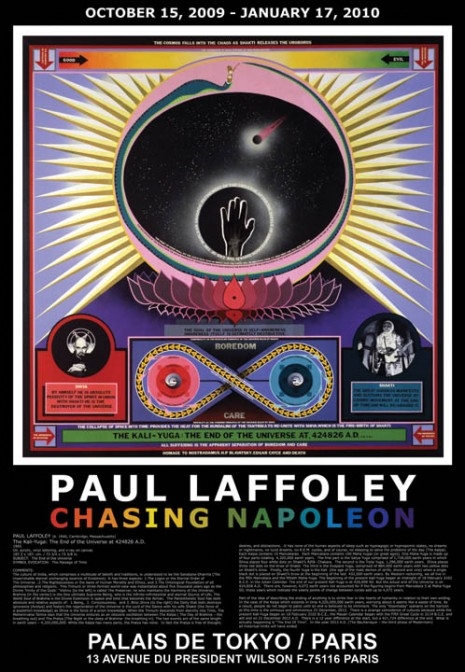
Okay, okay so although I could probably definitely be accused of bias—the volume in question here is about a dear friend of nearly twenty years and edited by another close friend of exactly the same vintage (plus I blurbed it)—I strongly feel that the recent University of Chicago Press book The Essential Paul Laffoley: Works from the Boston Visionary Cell edited by Douglas Walla is a “document of seismic cultural importance.” I’m quoting myself here, but fuck it: I’m right.
When Paul Laffoley died last November at the age of 80, he left behind a vast archive of mind-boggling, awe-inspiring work. Huge paintings, elaborate drawings, models, handwritten journals, architectural blueprints, sci-fi inventions, essays. He was one of the great geniuses of the 20th century, although few people are aware of this fact. An eccentric genius to be sure, but a true Mount Olympus-level genius is what he was, make no mistake about it. This isn’t merely my opinion, it’s more a matter of objective fact. In due course—and I’m certain of this—the rest of the world is going to figure it out, too. I say this in all seriousness: The man was the Leonardo of our time. History will bear my bold statement out. (If you disagree, you just don’t know what you are talking about. See what I did there?)
But don’t worry, in the coming years the human race is going to figure this all out—of this I have complete confidence—and The Essential Paul Laffoley: Works from the Boston Visionary Cell will be the cornerstone of all future academic scholarship about the man, it’s both “Paul Laffoley 101” and the graduate level course in one volume. It was put together—a product of pure love and admiration—by the world’s #1 undisputed authority on the great artist’s work. Over the course of the past three decades, Paul Laffoley has been represented by Douglas Walla at Kent Fine Art in New York City. In a career going back to the 1970s, Walla has worked with artists like Francis Bacon, Richard Artschwager, Dorothea Tanning and Llyn Foulkes. He’s brokered deals for Giacometti’s, Picabia’s, Richter’s, Duchamp’s and even a few Rodins. In the cutthroat business of the New York art world, you couldn’t find a finer man than Doug.
The world isn’t always kind to the type of eccentric individual that Paul Laffoley was. History will record how very lucky he was to have met Douglas Walla when he did because otherwise he might have died in obscurity, instead of seeing vast museum-level surveys of his work mounted in London, Berlin and Paris during the final years of his life.
I sent Douglas Walla a few questions via email over the weekend and he sent them back to me this morning
Richard Metzger: How long did it take to prepare the book?
Douglas Walla: The short answer is 27 years.
When I made the first studio visit to Paul’s Bromfield Street studio—the Boston Visionary Cell—in 1986, he was already working on Thanaton III. The lettering as such was not yet added, but it was certainly well underway. I arrived at 10 am, and Paul immediately launched into a major—and almost trance-inducing—meditation on the manifestations of the painting. The next thing I knew, it was 2:00 pm, and thinking I had a plane to catch back to NYC at 6, I said, “How about that other painting?” He simply said, “I’m not done yet” (meaning he wasn’t done with his explication of Thanaton III). So flying home, I thought, I need to do a book. As a postscript, Thanaton III appears in the book published in 1989, but the lettering still had not yet been added.
I returned with a tape recorder, and I recorded “The Dream as the Initiation” which became chapter one of The Phenomenology of Revelation. In all, between Paul, myself, and Jeanne Marie Wasilik, we recorded about 25 hours of dialogue with Paul, and that was edited down to eight chapters that would become the first book on Paul for which I acted as photo editor vetting the subjects touched upon, and Tony Morgan took a free hand in designing the final publication.
In the process, I developed a template we called a “thought form,” believing that the understanding of each individual work would be enhanced by a linguistic text plate to help the viewer more easily see what Paul was thinking. A complicated caption.
After the book was finished, I continued to work with Paul over the next twenty years compiling a thought form for each work we discussed. So the archive progressed, and we paid particular attention getting good photography for each work, in that there was mounting interest in READING the paintings as they appeared in reproduction.
Paul and I collaborated for over 25 years building this archive, with the hopes of printing (analog) a catalogue raisonne of his work, and not placing it on the internet. I had the misfortune of posting 80 entries several years ago only to have it all copied, posted to another website unknown to me, and having the carefully edited texts violated and changed, and having his work reduced to collage, snippets, montages, wallpaper, etc. So a book stands as a valid authority on the topic of Paul’s work without alterations by others.
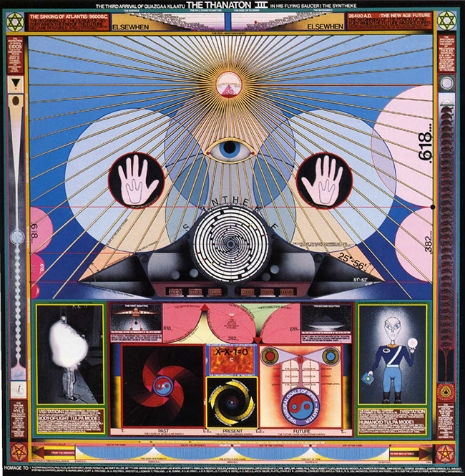
Richard Metzger: How many additional paintings and drawings didn’t make the cut?
Douglas Walla: In that Paul never kept records of what he finished, when presented with the invitation by the University of Chicago Press to publish a monograph on Paul, I realized that a “Complete Works” book was almost impossible. There would always be other works coming to the surface, although I would state that only about 10 such works have come to my attention in the last decade. The format that was workable, conceptually as well as intellectually, was The Essential Paul Laffoley chronicling 100 works.
What was left out were many of what Paul termed “nudes,” which were paintings without text. Further, there were commissioned works such as Hank Williams, and the Elvis series which do not appear, and many of the architectural three dimensional models he made which were in disrepair. There was also Rubaiyat (75 sketches) that I only became aware of after death, and his uncompleted tarot deck which he worked on to the end, along with what would have been a major work entitled The Garden of Earthly Death. There were ten large scale canvases unfinished at his death, and approximately 27 paintings that were unsigned, untitled, undated and never shown, all of which are omitted from the publication.
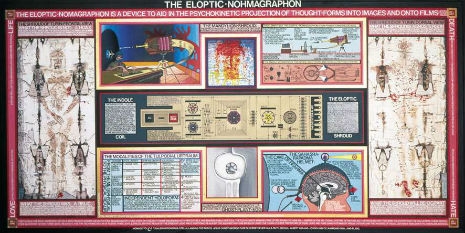
Richard Metzger: How would you describe your relationship with Paul? Obviously you were his gallerist and representative for decades, his close friend, his patron and #1 fan—you not only told the world about him, you actually invested a lot of money in his career, publishing his book when he was a complete unknown and so he that wouldn’t have to work and could produce more work. I’ve never said this to you before, but I always saw you as being the father figure in the relationship. Despite Paul being many years older than you, there was something childlike about him. The way you looked after him always seemed very paternal to me, but I want to hear your take on it.
Douglas Walla: The thing we all learned about Paul was his extreme generosity in terms of patience, good humor, and intimidating intellect. Always pushing the outside of the envelope so to speak, I was endlessly challenged and stimulated by our association. He was a friend, and a pleasure, and gracious. As his physical health began to deteriorate (and I think I was in denial that he was on a path to his final congestive heart failure), I became his travelmate certainly by 2009. When he injured himself in 2001—he fell off a ladder—I became his medical proxy sorting through extremely complicated medical issues concerning his diabetes and the impact it had in devastating his cardiovascular system. Of course one of his legs was amputated. So by 2009, I tried to get him to all the things he longed to see and visit including Neuschwanstein, Dornach, Eiffel’s Apartment at the top of the Tower, the Space Needle—his bucket list.
The only thing on that list he never saw was the completed book.
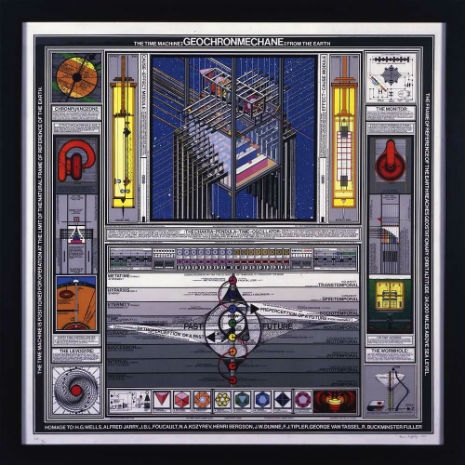
Keep reading after the jump…













